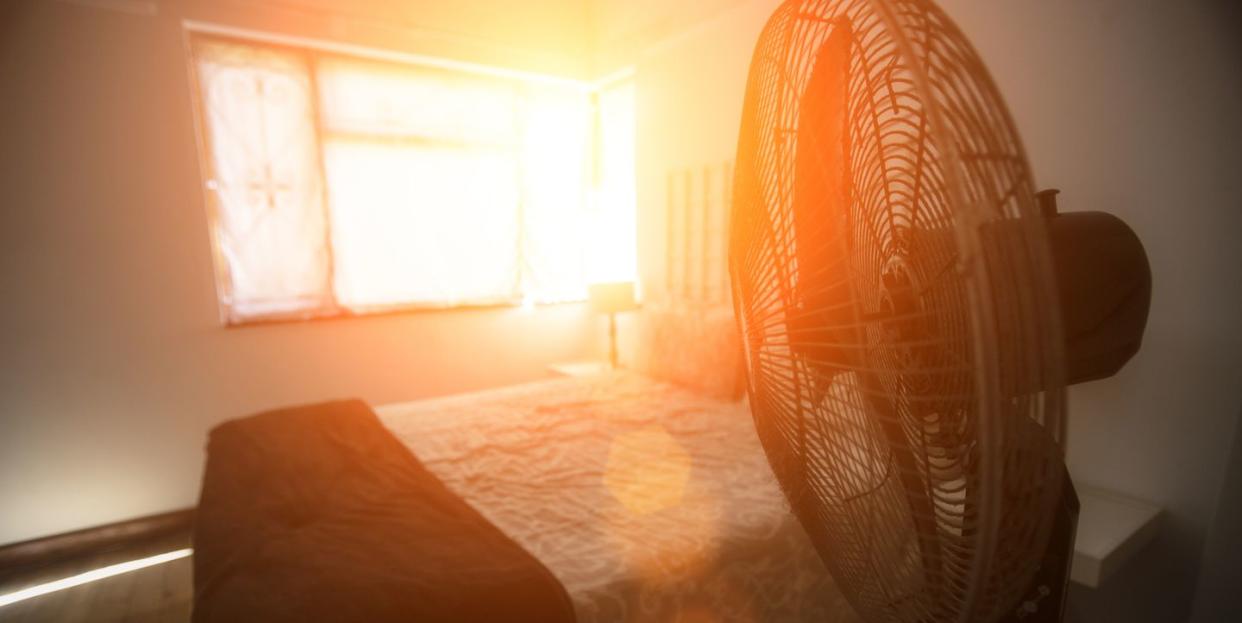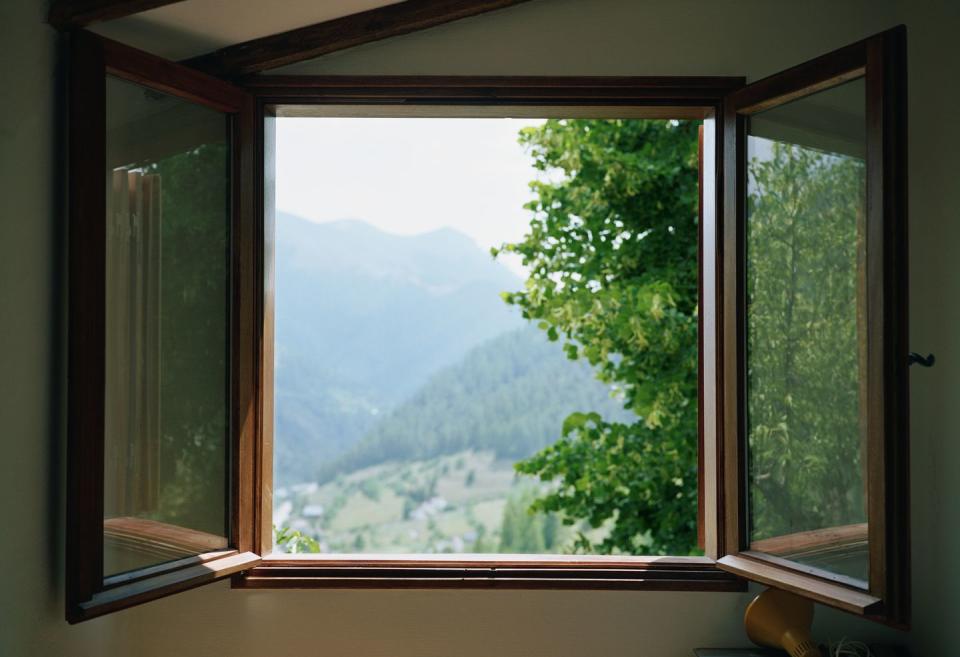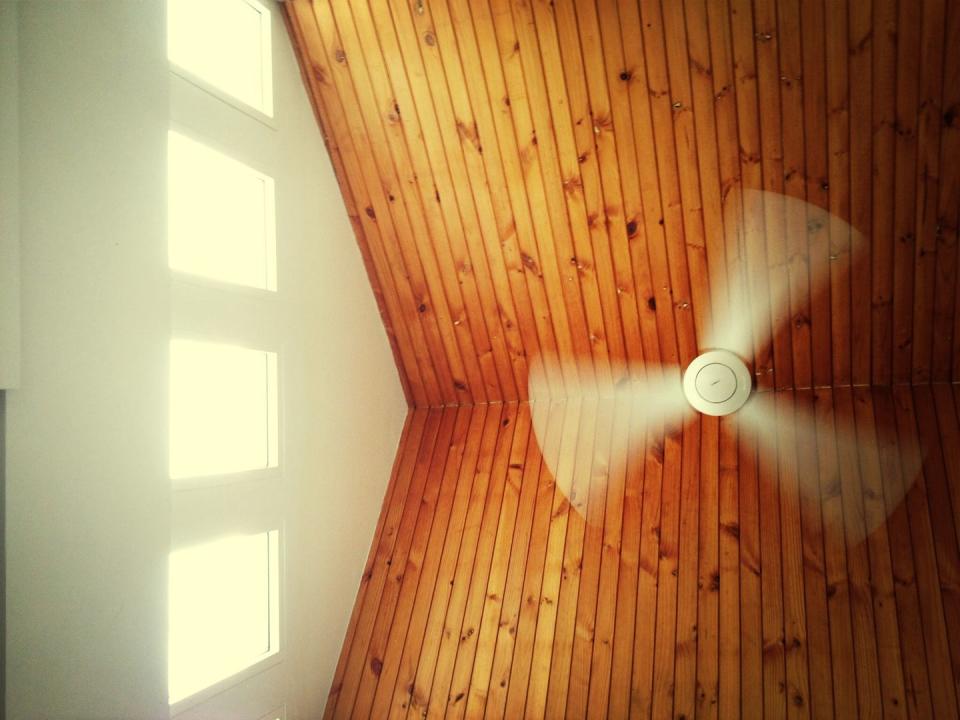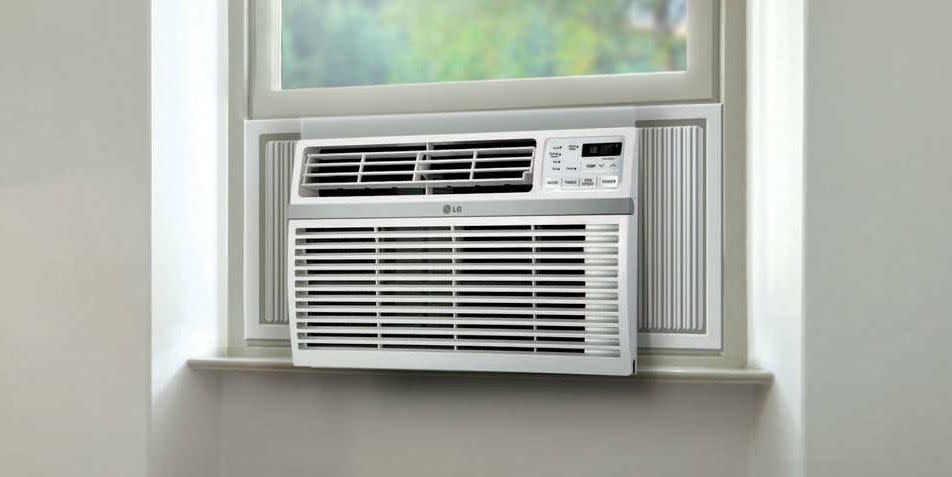How To Cool Down a Room (Without Blasting A/C)

As summer starts to sizzle and temperatures continue to rise, our homes can offer little refuge from the oppressive heat and humidity. Sure, running the air conditioner—if you have one—will make you feel more comfortable, but at a price: It’s not unusual for homeowners to see their electric bill double—or even triple—during the summer.
So, I thought here are five effective and affordable ways to keep your home cooler this summer, without having to rely on a central air-conditioning system or window A/C units.
No. 1: Window Logic

This may seem obvious, but the very best way to keep your home cool is to block the sun’s solar heat before it enters your home. And here’s how: In the morning, shut all the windows that face east and south; be sure to draw the curtains and lower the blinds, too. And then open all the windows on the west and north side of the house. That will help block out the sun, yet still allow fresh, cooler morning air to enter rooms.
Now, in the late-afternoon when the outside temperature drops below the temperature inside your home, reverse the morning routine: Open the windows on the east and south sides of the house, and close the west- and north-facing windows. This is important because once the outside temperature drops, all the solar heat that was absorbed by your home during the day will be released into the air.
No. 2: Overhead Insulation
Most everyone knows that a properly insulated house is critical to maintaining comfortable indoor temperatures all year round. However, you might not realize that the very most important place to install insulation is in your attic floor.
According to the Insulation Institute, if you live in the south, you should have about 14 inches of insulation covering your attic floor, and about 18 inches of insulation if you live in the north. And the reason attic insulation is so important in the summer is that it prevents hot attic air from warming the rooms below, which can keep the whole house cooler and more comfortable.
The easiest DIY way to increase the depth of attic insulation is to simply lay unfaced batts of fiberglass or mineral wool insulation right on top of—but perpendicular to—the existing attic insulation.
No. 3: Fantastic Ideas

Ceiling fans are surprisingly effective in keeping rooms cool, and they use only about one tenth of the electricity of a typical air conditioner. And a breeze of just one mph will make you feel three to four degrees cooler and here’s why: Unlike air conditioners, fans cool people not the room air. Just check to be sure the fan is blowing air down; some models have a “winter” setting that reverses the blade rotation to blow upward.
And if you don’t have ceiling fans, try using portable box fans, which can make rooms feel more comfortable even during the hottest stretches of sultry weather. The most effective use of portable fans is to wait until the early evening, and then place one or two fans in east- or south-facing windows; be sure the fans are blowing air into the house. Then, place a couple of fans in windows facing west or north, so that they’re blowing out. That setup will quickly cool things down by exhausting hot, stale air out of the house.
No. 4: A Whole Home Solution
A whole-house fan provides one of the quickest, most efficient ways to exhaust hot, humid air from a house. A standard-size whole-house fan consists of two electrically driven fans set in a metal frame. There are louvers beneath the fans and a hinged insulated cover above them. The unit is usually installed in the ceiling of a stairwell or hallway.
To quickly cool down your house, especially in the evening, simply open several windows and flip on the fan. In a matter of minutes, the two powerful fans will draw hot air from each room and blow it into the attic where it’ll eventually flow outside through vents in the home’s soffits, ridge or gable end.
No. 5: Forego the Oven
There’s no surer way to make a kitchen unbearably hot than by a turning on the oven. So, when the dogs days of summer come, cook meals outdoors on the grill, use a microwave or crock pot, or even a toaster oven, which produces much less heat—and uses less electricity—than a full-size oven. If you must use the oven, wait until the late evening or very early morning, when the house is coolest.
And remember, most municipal electric companies will perform a free in-depth energy audit of your home, which can help you discover other ways to conserve energy, save money, and keep cooler this summer.
Bonus: Okay, Maybe You'll Need an A/C

Listen, with the planet warming on average, there are going to be blistering days when even the most cooling-conscious consumers will need to resort to some A/C relief. Here's a list of our favorite window A/Cs, our favorite portable A/Cs (which trades energy-saving for convenience), and a guide to get your central air unit running a peak efficiency.
You Might Also Like

